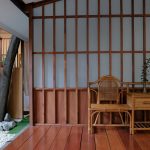Exploring Eco-Friendly Fashion Trends for a Sustainable Wardrobe

The contemporary landscape of fashion is witnessing a profound transformation as consumers increasingly seek garments that reflect not only personal style but also a commitment to environmental stewardship and social responsibility. This shift towards eco-friendly fashion represents more than a fleeting moment in the industry; it embodies a fundamental reimagining of how clothing is produced, consumed, and cherished. As awareness grows regarding the fashion industry's substantial contribution to global carbon emissions and textile waste, individuals are turning towards sustainable practices that prioritise the planet and its people. Embracing this movement means making informed choices that align with values of ethical sourcing, quality craftsmanship, and long-term wearability, ultimately fostering a wardrobe that is both stylish and conscientious.
Understanding sustainable materials in modern fashion
The foundation of any eco-friendly wardrobe lies in the materials selected for garment construction. Sustainable fashion emphasises the use of fabrics that minimise environmental harm throughout their lifecycle, from cultivation and production to eventual disposal. Organic cotton, for instance, is grown without harmful pesticides and chemical fertilisers, offering a gentler alternative to conventional cotton farming. Similarly, linen derived from flax plants requires significantly less water and energy during cultivation, making it an exemplary choice for those mindful of resource conservation. Hemp stands out as another remarkable fibre, thriving with minimal water and no need for synthetic fertilisers, whilst contributing to soil health through its natural growth cycle. Tencel, a branded form of lyocell, is produced from sustainably sourced wood pulp through a closed-loop process that recycles water and solvents, ensuring minimal waste. Bamboo fabric, when processed responsibly, presents a renewable option due to the rapid regrowth of bamboo plants. These natural fibres not only reduce the fashion industry's environmental footprint but also offer breathability, durability, and comfort, characteristics that enhance the wearer's experience whilst supporting the planet.
Recycled fabrics and their environmental benefits
Recycled materials have emerged as a cornerstone of circular fashion, transforming waste into valuable resources and diverting textiles from landfills. Recycled polyester, often derived from post-consumer plastic bottles, offers a practical solution to plastic pollution whilst reducing the demand for virgin petroleum-based fibres. This process conserves energy and water compared to producing new synthetic materials, thereby lowering the overall carbon footprint of the garment. Upcycled fabrics take this concept further by creatively repurposing existing textiles into new designs, breathing fresh life into materials that might otherwise be discarded. The adoption of closed-loop systems within the textile industry could reduce emissions by nearly forty-four percent, a significant stride towards mitigating the fashion sector's environmental impact. By choosing garments made from recycled or upcycled materials, consumers actively participate in reducing textile waste, which currently sees eighty-five percent of discarded textiles in some regions ending up in landfills or incinerators. This conscious choice not only addresses the pressing issue of waste management but also encourages brands to innovate and invest in sustainable production methods.
Natural fibres versus synthetic alternatives
The debate between natural fibres and synthetic alternatives is central to sustainable fashion discourse. Natural fibres such as organic cotton, linen, and hemp are biodegradable, breaking down more readily at the end of their lifecycle and thus posing less long-term environmental harm. These materials often require fewer chemical treatments and can be cultivated through regenerative agricultural practices that enhance soil quality and biodiversity. On the other hand, synthetic fibres like conventional polyester and nylon, derived from petrochemicals, contribute to microplastic pollution and are not biodegradable, persisting in the environment for centuries. However, recycled synthetic fabrics mitigate some of these concerns by repurposing existing plastics and reducing reliance on virgin materials. The choice between natural and synthetic options should consider factors such as the garment's intended use, care requirements, and the transparency of the production process. Brands that prioritise supply chain transparency and ethical sourcing enable consumers to make informed decisions, ensuring that even synthetic materials are produced with minimal environmental impact. Ultimately, a balanced approach that favours natural fibres for their biodegradability and recycled synthetics for their waste-reduction potential creates a more sustainable wardrobe.
Building an ethical wardrobe that lasts

Constructing a wardrobe that endures requires a commitment to quality over quantity, a principle that stands in stark contrast to the fast fashion model of rapid consumption and disposal. An ethical wardrobe embraces timeless pieces that transcend seasonal trends, offering versatility and longevity through thoughtful design and superior craftsmanship. This approach not only reduces the frequency of purchases but also diminishes the environmental burden associated with manufacturing and transporting new garments. Investing in high-quality clothing means selecting fabrics that withstand repeated wear and laundering, seams that are expertly finished, and silhouettes that remain relevant across changing fashion cycles. A capsule wardrobe, characterised by a curated selection of essential items that can be mixed and matched, exemplifies this philosophy, enabling countless outfit combinations from a modest collection. By prioritising durability and classic aesthetics, individuals can cultivate a personal style that is both distinctive and sustainable, whilst significantly decreasing their contribution to textile waste. This shift in mindset encourages a deeper appreciation for the garments we own, fostering a relationship with clothing that values longevity and intentionality over ephemeral trends.
Identifying brands with fair labour practices
Ethical fashion extends beyond environmental considerations to encompass the welfare of the individuals who produce our clothing. The global textile industry has long been criticised for exploitative labour practices, with only two percent of workers earning a living wage and many enduring unsafe working conditions. Over eighty percent of garment workers are women, frequently subjected to long hours, inadequate pay, and hazardous environments. Identifying brands that prioritise fair labour practices involves seeking out companies that demonstrate transparency in their supply chains, ensuring that workers receive fair compensation, reasonable working hours, and safe conditions. Certifications such as Fair Trade, B Corporation status, and membership in initiatives like the Ethical Trading Initiative provide assurance that a brand adheres to rigorous ethical standards. Additionally, brands that collaborate with local artisans and support traditional craftsmanship contribute to preserving cultural heritage whilst providing sustainable livelihoods. Consumers can further support ethical fashion by researching brand values, reading independent reviews, and favouring companies that openly share information about their production processes and labour policies. By choosing to purchase from brands committed to fair labour practices, individuals exert economic influence that encourages broader industry reform and upholds human dignity throughout the supply chain.
Quality over quantity: investment pieces for longevity
The principle of quality over quantity is fundamental to building a sustainable wardrobe that withstands the test of time. Investment pieces, characterised by exceptional craftsmanship, enduring design, and superior materials, offer value that extends far beyond their initial cost. These garments are designed to be worn repeatedly across seasons and occasions, reducing the need for frequent replacements and thereby minimising waste. A well-constructed coat, a pair of expertly tailored trousers, or a versatile dress made from organic or recycled fabrics exemplifies this approach, providing both style and longevity. The best fashion trends for 2021 highlighted a growing appreciation for timeless elegance and sustainable choices, a movement that continues to gain momentum as consumers recognise the environmental and economic benefits of investing in fewer, better-quality items. Caring for these pieces through proper laundering, timely repairs, and appropriate storage further extends their lifespan, ensuring that they remain wardrobe staples for years. Embracing this philosophy requires a shift away from impulsive purchasing driven by fleeting trends and towards a more considered approach that values craftsmanship, ethical production, and personal expression. By curating a collection of high-quality, versatile garments, individuals not only reduce their environmental footprint but also cultivate a wardrobe that reflects their unique style and values, proving that sustainability and fashion excellence are not mutually exclusive but rather complementary pursuits.






















